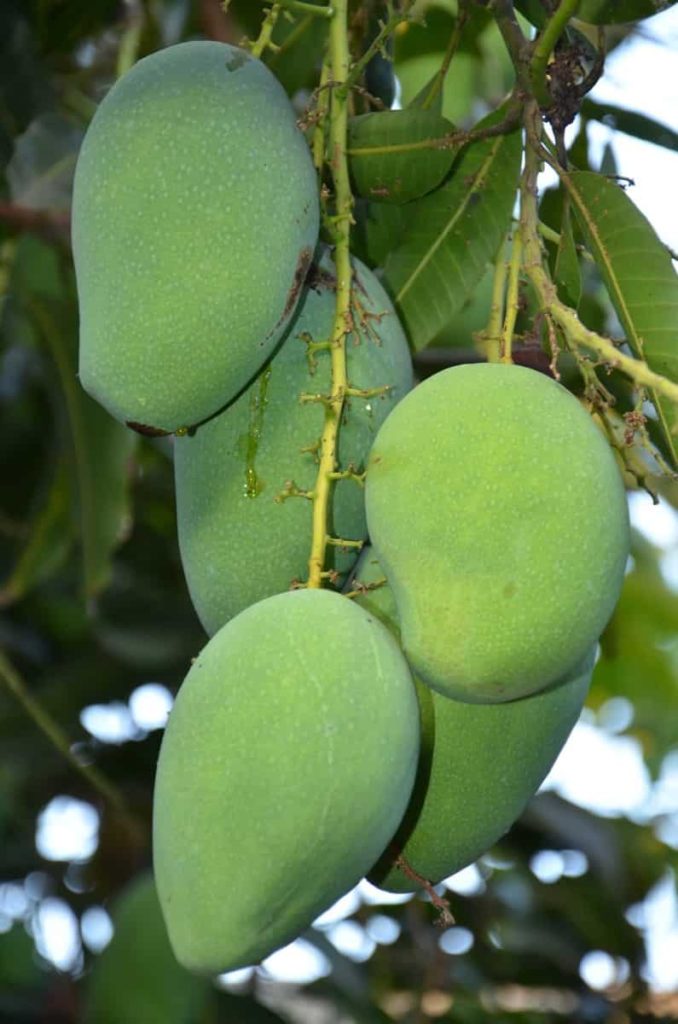Mango is a stone fruit, and it belongs to the family Anacardiaceae which are flowering plants that bear fruit. Mexico is one of the largest Mango producers globally, ranking it the fourth-largest producer of Mangoes. Mangoes vary in shape, size, taste, skin color, and flesh color, depending on the variety. Let’s check out more information about mango farming in Mexico.
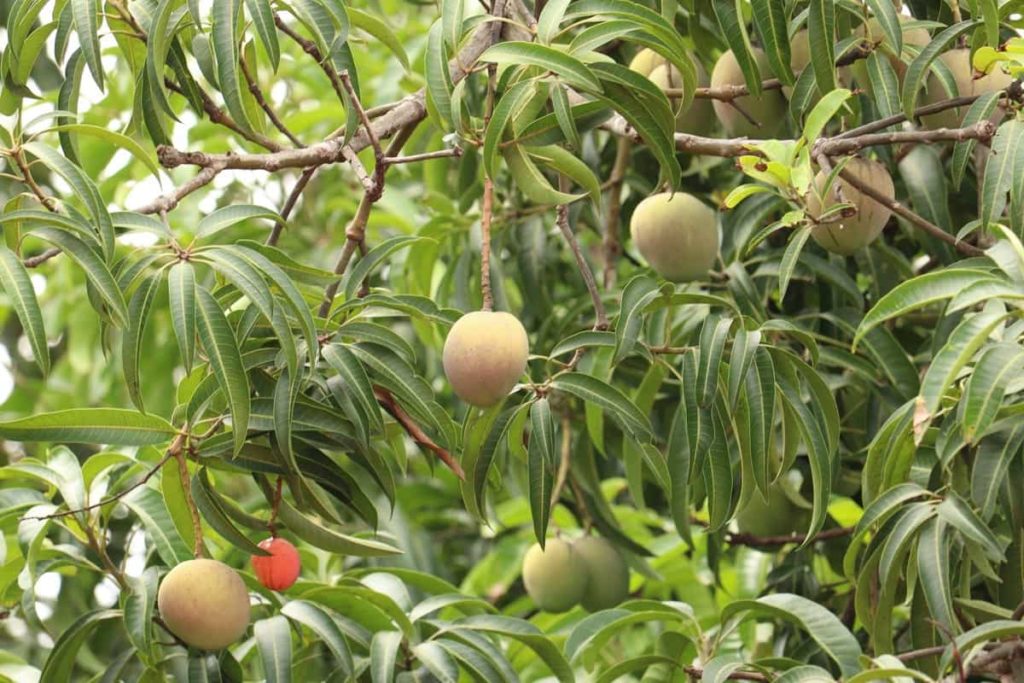
Mango (Mangifera indica), which has more than 1,000 varieties worldwide, accounts for 36% of the world’s tropical fruit consumption and is called the “King of Fruits,” as the name implies. Growing to an average height of 60 feet at maturity, this tropical evergreen – relative to cashews, pistachios, and wide berries – has a round canopy of bright, sweet-scented leaves from light pink to dark green as the tree becomes mature.
Small, light yellow to pink flowers hang in clusters from a common stem. After miles of miles in the tropical regions of Mexico, they were travelling along the majestic, symmetrical Mango orchards is a delight at any time, especially when the young fruits hang from their trunks like tree ornaments. Mexico grows Mangoes on more than 164,582 hectares nationwide. Domestic consumption represents about 88%, and about 12% is exported to foreign markets.
The most exported cultivars are Haden, Tommy Atkins, Keitt, and Kent, while Manila, Ataulfo , and “native” selections are for the local market. Mexico has a wide variety of climate conditions and can produce Mangoes in large seasons. Harvesting for export begins in late January or early February and ends in late September. Mexico’s share of the U.S. Mango market will increase dramatically in the spring and summer.
According to USDA figures, Mexico accounts for about two-thirds of total U.S. Mango imports. Manila Mango is now one of the most popular varieties of Mango in Mexico. Each year, Mexican Mangoes begin arriving in the U.S. production areas at the end of winter, giving them a healthier start to the year-end, growing season than many other popular fruits. Shipping of Mangoes from Mexico usually continues until early autumn.
Mango growing states in Mexico
Sinaloa, Nayarit, Jalisco, Michoacan, Veracruz and Chiapas are the most important Mango growing and exporting states in Mexico. Mexico has been the world’s largest exporter of Mangoes for many years, surpassing China a few years ago. The most widely grown variety in Mexico is Manila, a small, flat, greenish-yellow Mango called the beak. Criollo or Petacon, a large, sweet, round, reddish-orange version of the fruit; Tommy Atkins and Kent, very large, very fragrant fruits, sometimes growing to the size of small melons.
Soil management
These trees can tolerate different types of soil. But a sandy loom that is light and well-drained is best. Soil pH levels can range from slightly acidic to slightly alkaline.
Organic mango farming in Mexico
As the organic Mango industry prepares to settle into the most active part of the season, the focus on full rate has replaced the need for more. Overall, the prices of organic Mangoes are high, with little difference from the start of the season. The more delicate Ataulfo varietal Mango, which has seen a significant increase in the organic market over the years, faces its problems due to excessive heat.
Although the heat has produced unusually high-flavored fruit for consumers, it also means an unexpected supply of fast-ripening fruit for buyers. The Mexican Organic Ataulfo season is predicted to end soon because of this increasing maturity rate, with most industry insiders predicting a maximum of three to four weeks. In addition, as the quantity of organic Mangoes from Mexico increases, the intensity of organic fruits seems to have decreased in the last two years, especially when traditional Mangoes are in good supply.
In case you missed it: Poultry Farming in Mexico: Breeds, How to Start
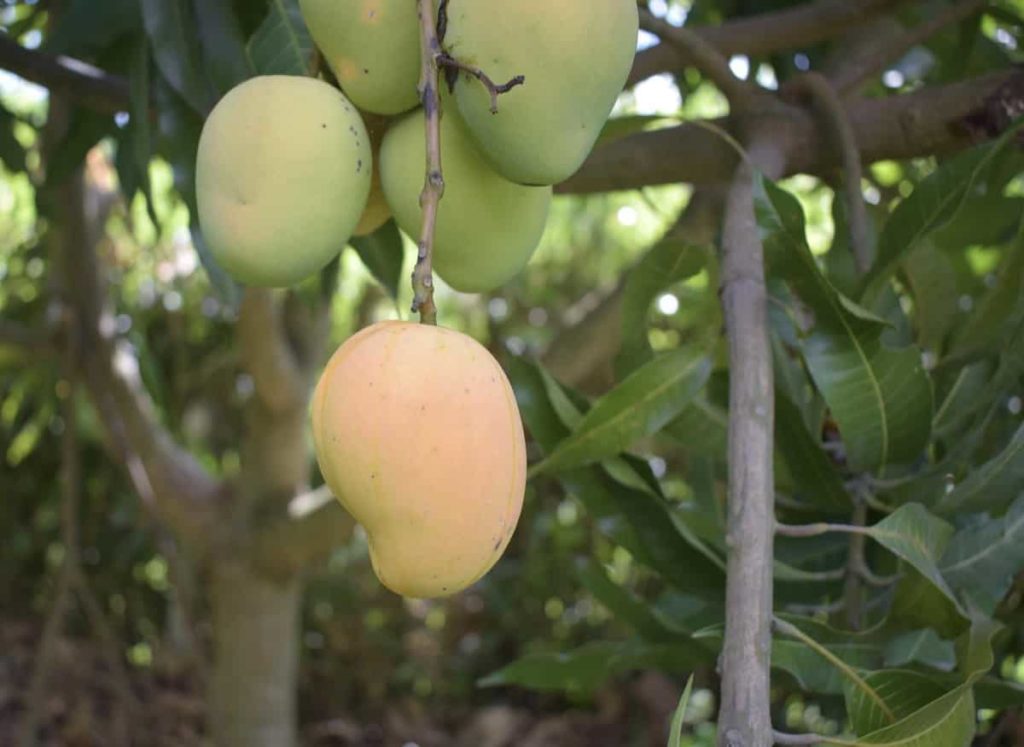
Mango season in Mexico
Shipping of Mangoes from Mexico usually continues until early autumn. The Mexican Mango season began in the first week of January and is expected to continue through the end of September – possibly until October. The Mexican Mango season (referred to as harvest time) usually begins in the early spring season, sometimes between February and March, depending on the weather conditions in the off-season.
The first fruit occurs in the southern regions of Chiapas and Oaxaca. Then, it slowly moves up the entire Pacific Rim throughout the summer months, ending in early fall and ending in the northern Sinalova region of Las Mochis. These sub-regions of the Mexican Mango crop; varieties have their sub-regions, including different geographies and micro-climates.
Mango varieties in Mexico
Mango distributors deal with different plant varieties in Mexico, but Manila, Ataulfo, Hyden, Tommy Atkins, Kent, Keitt, Petacon, and Cirillo are the people’s favourites.
Ataulfo – Also known as honey, it is the second most popular type of Mango in Mexico. It has a sweet and sour taste. Mangoes are readily available from March to July. The fruit’s flesh has a tropical aroma, and when it is fully ripe, the color turns dark yellow and takes on a flattened elongated shape.
The ideal temperature for this type of Mango is 28°C with an annual rainfall of 1090-3000 mm from April to October. Ataulfo Mangoes originate from the Mexican states of Michoacan, Sinaloa, Nayarit, Jalisco, Veracruz and Chiapas and are sold between March and September.
Haden – This flavor is both sweet and sour because it initially tastes sweet and later turns into a bitter taste. Mainly grown in Peru, Ecuador, and Mexico, these Mangoes are red with greenish-yellow colours. They are usually round to oval and have small white dots on the flesh.
Manila – Carabao is another name for Manila Mangoes with a sweet and soft taste. To buy this type of Mango, you need to contact the leading Mango suppliers and distributors.
Kent – Mexico is one of the major producers of this type of Mango. This type is perfect for making juices from December to February because it tastes sweet with sour notes.
Keitt – The sweet and fruity taste of Kate Mango makes it one of the most sought-after ingredients in Asian cuisine. This variety, commonly used to make pickles, is available for a longer period from March to April and again in August and September.
Tommy Atkins: It is one of the widely grown Mango varieties in the United States. Available from March to July, it tastes sweet with a sweet aroma. It is clear that different Mango varieties are available in different seasons, so the people of Mexico are fortunate to enjoy the taste of this highly nutritious fruit in different forms throughout the year.
In case you missed it: How to Buy Agricultural Land in Mexico

Planting material and propagation in Mango farming
Mango can be grown from seed or spread from plants. Mango plants are grown using various techniques such as veneer grafting, inarching, and epicotyl grafting. In Mango cultivation, propagation is mainly done through seeds, especially for indigenous varieties.
Exotic varieties are obtained by successfully scanning and grafting on native rootstock. It leads to the growth of various dwarf trees. When planting, the distance can vary from 5m x 5m to 8m x 8m, depending on the variety of growth habits.
Flowering and nutrition
Mangoes require large amounts of potassium for flowering, flower retention, and good fruit growth during flowering. Insufficient potassium causes heavy flower abortions and unhealthy fruit set and growth. To prevent this, farmers should spray Goldchance Flower and Fruit 50 grams / 20 litres weekly on the appearance of flower buds.
Mango growing conditions in Mexico
Mango can be grown in various soils, from light sandy loam to red soil. Deep, well-drained, well-drained soil provides excellent yield and fruit quality. Some producers plant trees on slopes to avoid flooding the root system. Mangoes grow best at ambient temperatures between 70º and 75ºF. Commercial Mangoes are grown vegetatively. Several important types of Mangoes are used in commercial fruit production.
These fields are described as either poly-embryonic or mono-embryonic. Polyembryonic plant varieties can be grown from seed and produce trees suitable for typing. Polyembryonic cultivars are often used as rootstocks because they adapt to local growing areas and soil conditions, and grafted monoembryonic cultivars produce fruit with the characteristics that consumers prefer. Grafted trees usually begin to bear fruit in three to five years, whereas seeded trees typically take five years.
Mango trees need space to grow and are usually planted in rows of 10 to 30 feet between individual trees and approximately 20 to 30 feet between rows. Growing trees are pruned so that there are three to four main branches on the trunk at different heights, and branches less than two feet above the ground are removed. Mature trees are pruned from time to time to facilitate better access to sunlight, spraying, and picking.
In case you missed it: Farming In Mexico, Crops, Livestock, FAQs
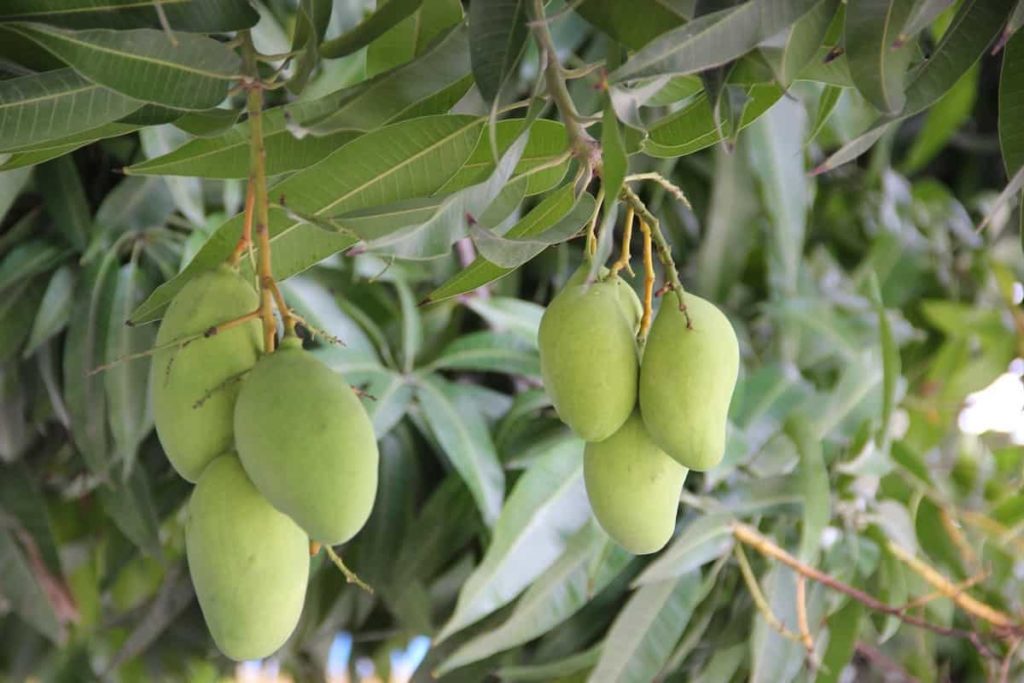
Mango trees are fertilized annually with nitrogen, phosphorus, and potassium. Irrigation may be necessary occasionally in dry periods, but the roots can become waterlogged if over irrigated.
Weeding
Weed control is also very important to control weeds, as weeds consume nutrients from the soil and damage Mango plants. Weeds and land should be harvested around the newly planted crop. Depending on the variety, it may take 5 to 6 years to start commercial fruiting (some varieties start fruiting after one year, but commercial production takes time).
Intercropping helps reduce weed control, and at the same time, you can use your space to make extra money. Legumes like Groundnut, Gram, and Lentils can be grown as intercrops. In addition, crops like Onion, Tomato, Radish, Beans, Cauliflower, and Cabbage are useful for intercrops. Avoid Bajra, Maize, and Sugarcane as intercrop.
Irrigation in Mango cultivation
Mango trees need less water. Mango farms should be irrigated every two to three days in the first year of your Mango farming business. However, about two irrigations are required when they begin to bear fruit. After that, you should water the fruit plant every 10 to 15 days. Take proper care during the flowering stage. During this stage, stop watering them. It depends on the soil type in which you grow a Mango tree.
Watering the Mango tree frequently is the best way to get good quality Mangoes after planting, flowering and fruiting. Mango trees tolerate some drought, although drought can adversely affect fruit production. Therefore, it is best to water the Mango tree, but do not let the tree sit in the wet soil.
Training and pruning
The branches should be kept at a distance of about one meter from the base of the main trunk, and then the main stem should be kept at a distance of 20-25 cm so that they grow in different directions. Branches that cross/rub against each other can be removed at pencil thickness.
In case you missed it: Best Fertilizer for Mango Tree: When to Apply and How To Apply
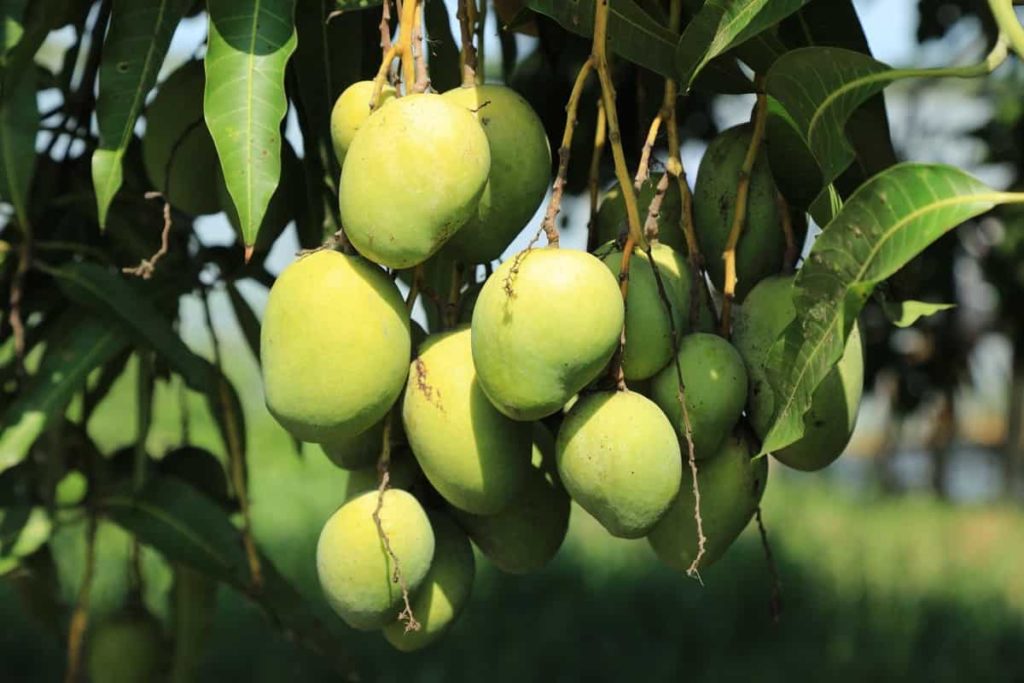
In the early stages of growth, the training of plants is very important so that they can be shaped appropriately, especially in cases where the graft has sprouted very few branches.
Plant protection measures
Insect pests – Insects most commonly observed are mealybugs, hoppers, inflorescence midges, fruit flies, and scale insects. To control these pests, it is recommended to spray with carbaryl, monocrotophos, phosphamidon, and methyl parathyroid.
Diseases and Disorders – Diseases like powdery mildew, anthracnose, dieback, blight, red rust, sooty mold, etc., are suspected in the crop. Appropriate chemicals/fungicides should be sprayed, preferably on a precautionary basis, to control these diseases. These include major damage, biennial effect, fruit drop, black tip, clustering, etc. The farmer needs advice and professional help to prevent / control diseases and defects in the crop.
When and how to harvest Mango
Mango is usually harvested at the stage of physical ripening and ripens to the best quality. Farmers can pick fruits by hand or pick them with a harvester. During harvesting, latex seeps down the surface of the fruit below the point of separation, giving it a wrinkled shape during storage. Mango is usually grown at physical maturity and ripened for optimum quality. Fruits are picked by hand by a harvester.
In case you missed it: Organic Mango Farming, Cultivation Practices
During harvest, latex falls below the surface of the fruit. When Mangoes are ripe on the tree, Mangoes are usually harvested when they are mature and ripe. Depending on the variety selection and climatic conditions, it can take up to three to five months after flowering. Mangoes should contain at least 14% dry matter before harvesting for commercial growers.
As far as color is concerned, the color usually changes from green to yellow, possibly with a slight blush. At maturity, the inside of the fruit changes from white to yellow. Harvested Mangoes must be kept in field containers. The Mango fruit should be kept in the shade and handled with care.
- Types of Pesticides Used in Agriculture: A Beginner’s Guide
- Economical Aquaculture: A Guide to Low-Budget Fish Farming
- 15 Common Planting Errors That Can Doom Your Fruit Trees
- How to Make Houseplants Bushy: Effective Tips and Ideas
- Innovative Strategies for Boosting Coconut Pollination and Yield
- Pollination Strategies for Maximum Pumpkin Yield
- The Complete Guide to Chicken Fattening: Strategies for Maximum Growth
- Natural Solutions for Tulip Problems: 100% Effective Remedies for Leaf and Bulb-Related Issues
- Revolutionizing Citrus Preservation: Towards a Healthier, Greener Future
- Natural Solutions for Peony Leaf and Flower Problems: 100% Effective Remedies
- Maximizing Profits with Avocado Contract Farming in India: A Comprehensive Guide
- Natural Solutions for Hydrangea Problems: 100% Effective Remedies for Leaf and Flowers
- The Ultimate Guide to Choosing the Perfect Foliage Friend: Bringing Life Indoors
- From Sunlight to Sustainability: 15 Ways to Use Solar Technology in Agriculture
- The Ultimate Guide to Dong Tao Chicken: Exploring from History to Raising
- The Eco-Friendly Makeover: How to Convert Your Unused Swimming Pool into a Fish Pond
- Mastering the Art of Delaware Chicken Farming: Essentials for Healthy Backyard Flocks
- 20 Best Homemade Fertilizers for Money Plant: DIY Recipes and Application Methods
- How to Craft a Comprehensive Free-Range Chicken Farming Business Plan
- Brighten Your Flock: Raising Easter Egger Chickens for Beauty and Bounty
- How to Optimize Your Poultry Egg Farm Business Plan with These Strategies
- Subsidy for Spirulina Cultivation: How Indian Government Schemes Encouraging Spirulina Farmers
- Ultimate Guide to Raising Dominique Chickens: Breeding, Feeding, Egg-Production, and Care
- Mastering the Art of Raising Jersey Giant Chickens: Care, Feeding, and More
- Ultimate Guide to Raising Legbar Chickens: Breeding, Farming Practices, Diet, Egg-Production
- How to Raise Welsummer Chickens: A Comprehensive Guide for Beginners
- How to Protect Indoor Plants in Winter: A Comprehensive Guide
- Ultimate Guide to Grow Bag Gardening: Tips, Tricks, and Planting Ideas for Urban Gardeners
- Guide to Lotus Cultivation: How to Propagate, Plant, Grow, Care, Cost, and Profit
- Agriculture Drone Subsidy Scheme: Government Kisan Subsidy, License, and How to Apply Online
- Ultimate Guide to Raising Araucana Chickens: Breed Profile, Farming Economics, Diet, and Care
- Bringing Hydroponics to Classroom: Importance, Benefits of Learning for School Students
- Ultimate Guide to Raising Polish Chickens: Breed Profile, Farming Economics, Diet, and Care
- Ultimate Guide to Raising Australorp Chickens: Profile, Farming Economics, Egg Production, Diet, and Care
- Silkie Chicken Farming: Raising Practices, Varieties, Egg Production, Diet, and Care
- Sussex Chicken Farming: Raising Practices, Varieties, Egg Production, Diet and Care
